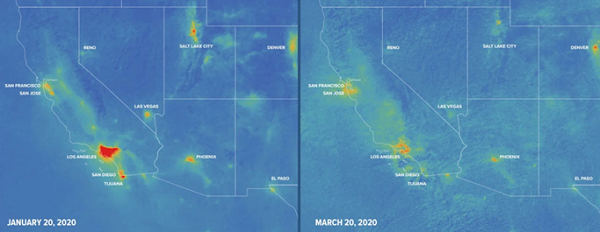|
With all the loss of lives and financial destruction that the coronavirus has brought us, it’s hard to look at silver linings from this crisis, but there’s one that’s becoming obvious: cleaner air.
It might not last for long, but it’s giving us a glimpse at what we could experience if the world was to rapidly transition to electric transportation.
With shelter-in-place and stay-at-home orders all over the world, passenger car traffic has been way down and people have been burning way less petrol.
A map of nitrogen dioxide captured from satellite images. it shows a massive reduction compared to just two months ago:

Source (Earther)

|